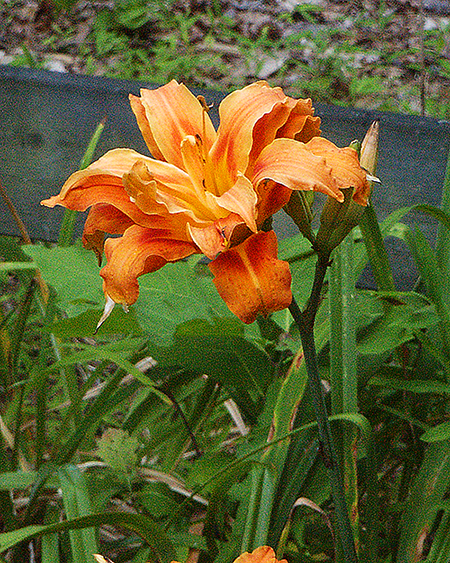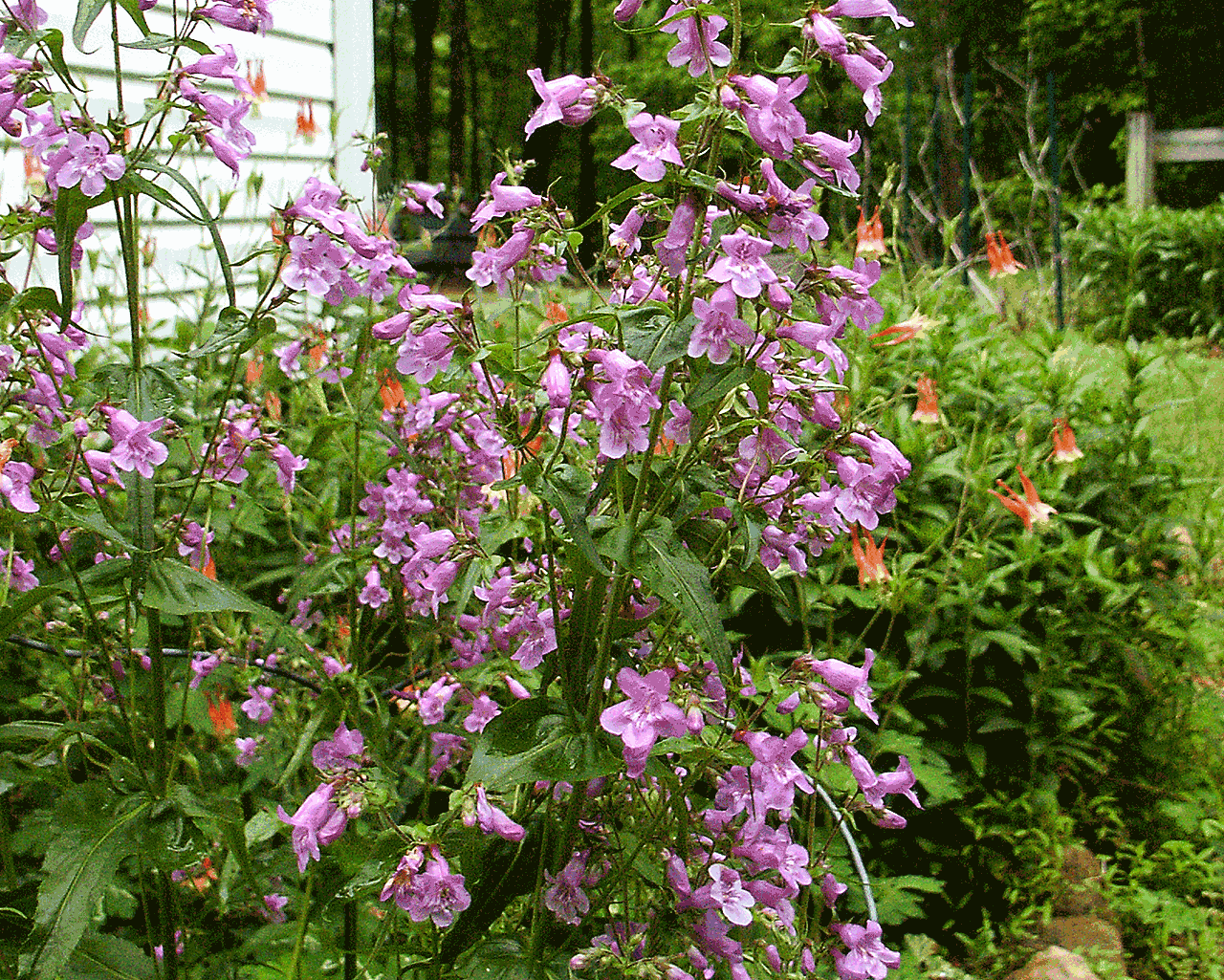Replanting Daylilies
 Replanted Daylilies |
I completed a task this weekend that actually should have been done in the fall; that task was replanting a daylily bed in the back garden. The bed of daylilies had become invaded by briar vines, poison oak, and small trees, and was a chore to try and keep clear of them. I decided the best thing to do was to dig up the daylilies, redo the bed, remove any remaining soil from the daylilies, replant and mulch. Hopefully I will now be able to properly maintain the bed of daylilies.
There are several cultivars of dayliles scattered around my gardens and most of them I have forgotten the names. Sister #4 gave me several varieties she had found that are heirlooms and I have yet to see what type of blooms they produce; it will be a treat to see what new additions I have. To get an idea of the many varieties of daylilies, over 35,000 cultivars have been named and marketed. Below is a photograph of the cultivar that I replanted in the back garden.
 Daylily (Unknown Cultivar) |
Daylilies are not true lilies; they belong to the genus Hemerocallis, which if broken down and translated means day beauty. The name comes from the short time the blooms will remain after opening. However, daylilies produce many blooms and will last for some time. Furthermore, not all daylilies bloom at the same time. In the front garden is a bed of daylilies that Mum planted containing two different cultivars of daylilies. When one has stopped blooming, the other will start so that the bed appears to have a prolonged blooming time. There are cultivars that blooms throughout the summer; Stella de Oro daylilies bloom through the summer and I have these located in the bed beside the side porch. I originally had them planted in front of the irises in the back garden but relocated them when I redid the iris bed last spring.
Daylilies are hardy perennials that are easy to grow. They tolerate many different soils, can thrive in partial shade, and can tolerate low rain fall. However, they do best in full sun with a moist well drained soil that is slightly acidic. Dayliles can be planted any time of the year, although the best time to transplant or divide daylilies is in the early spring or in the fall. Dividing in the spring may result in less blooms forming during the summer.
Planting daylilies is easy; once you have your bed prepared, scoop out a hole big enough for the roots to fit and deep enough so that the crown will be 2.5 cm (1 in) below the ground level. The crown is the part where the roots meets the stems. If you are dividing daylilies, dig up a clump of the plants and carefully knock the soil from the clump. Once you have the soil loosen you can carefully pull the plants apart. Daylilies can be divided every three to four years to improve the bed and bloom production. Daylilies are vigorous growers and can outgrow a bed in a few years. You can either transplant to new areas of your garden, or give them away to fellow gardeners; if those two options are not viable, then toss the excess plants onto the compost heap.
1 comment
This post has 1 feedback awaiting moderation...


